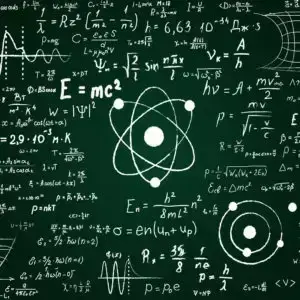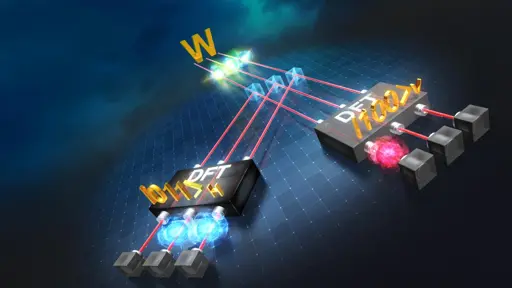Scientists at Kyoto University and Hiroshima University have achieved a breakthrough in quantum physics by successfully identifying the elusive W state of quantum entanglement, solving a 25-year-old challenge in the field[1].
The team developed a method to measure entangled W states using photonic quantum circuits, demonstrating it successfully with three photons. This achievement is significant because W states, along with GHZ states, are fundamental building blocks for quantum networks[1:1][2].
“More than 25 years after the initial proposal concerning the entangled measurement for GHZ states, we have finally obtained the entangled measurement for the W state as well,” said Shigeki Takeuchi, the study’s corresponding author[1:2].
The breakthrough enables single-shot identification of quantum states, eliminating the need for numerous measurements that grow exponentially with added photons. This advancement opens paths for:
- Quantum teleportation of information between distant locations
- New quantum communication protocols
- More efficient quantum computing methods
- Transfer of multi-photon quantum entangled states[1:3][3]
The research team used highly stable optical quantum circuits that could operate for extended periods without active control. They validated their method by successfully distinguishing different types of three-photon W states[3:1].
My understanding is that “the speed of light in a vacuum” isn’t really about light itself, but rather about the speed limit of cause and effect, or “information”, in our universe. Light just happens to move at that maximum speed.
In quantum mechanics, even if you can have an entangled pair (separated by long distance) collapse instantaneously, that system still couldn’t be used for instantaneous communication that exceeds the speed of light in a vacuum. (At least, that is what I have previously understood.)
I read all three articles, and didn’t find an answer to this question:
When they say “quantum teleportation of information” - The speed of that teleportation itself is still limited to C, right?
Yes, “quantum teleportation” just means transfering a quantum state from one location to another without knowing what that state is, in the same sense that you can copy a file from one place to another without knowing its contents. So it’s just a particular kind of information being transfered, not anything about how quickly it’s transfered. There is a lot of awful terminology in quantum mechanics.
For using the quantum teleportation algorithm you first have two establish entangled qubit pair, with one photon at the sender and one at the destination. This process does take the distance over speed of light amount of time. The trick is that you would pre-process this, and decide later when to and what information to encode into the qubit, allowing for “instant” information transfer. Naturally, this requires that you have a very good memory device that keeps the fidelity of the entangled qubits.
You would never be able to tell wether the information was a random collapse or encoded by the other site. You can not gain information out of quantum states. You need to measure them which destroys the state.
You need to know which basis the sender use to collapse and measure in the same basis. Then you need to sample a statistical distribution and the desired information will be the average of the distribution. This is very well proven in the Bells inequality experiment and can definitely be used to gain information.
It is clearly not very efficient in the sense a lot of transported bits are wasted to convey less information. But the advantages of instantaneous and secure communication will be worth it in some use cases.
That is, of course, if the engineering issues such as quantum repeaters (a sort of range extender) and high fidelity storage are properly solved. It is a few years ago since I did any quantum information in uni, so I don’t know what the current state of things are.
Rebranding OneDrive to Microsoft SchrödingerDrive. Your data is there until you try to look at it.
As always: Nice super niche discovery that maybe will have some helpful effects in super niche research in 30 years.
There’s really no point getting excited over news like that, because more likely than not it will never have an effect to the average person and if it does, that effect will never be as glorious as it sounds like in the noncientific news. (And yes, even if it says “Science” in the title, it’s still non-scientific, because actual scientific news is nothing that ever goes viral.)
Would you agree that atomic clock for super precise timekeeping falls int the same cathegory?
How long was it from the first paper about it until the first implementation?
Basic research is incredibly important, but it’s not something anyone outside of the scientific community needs to get hyped about.
Especially not if they expect star trek teleportation and all they get is quantum entanglement.
I don’t know, but it’s effect is definitely not niche. It’s how you get GPS.




